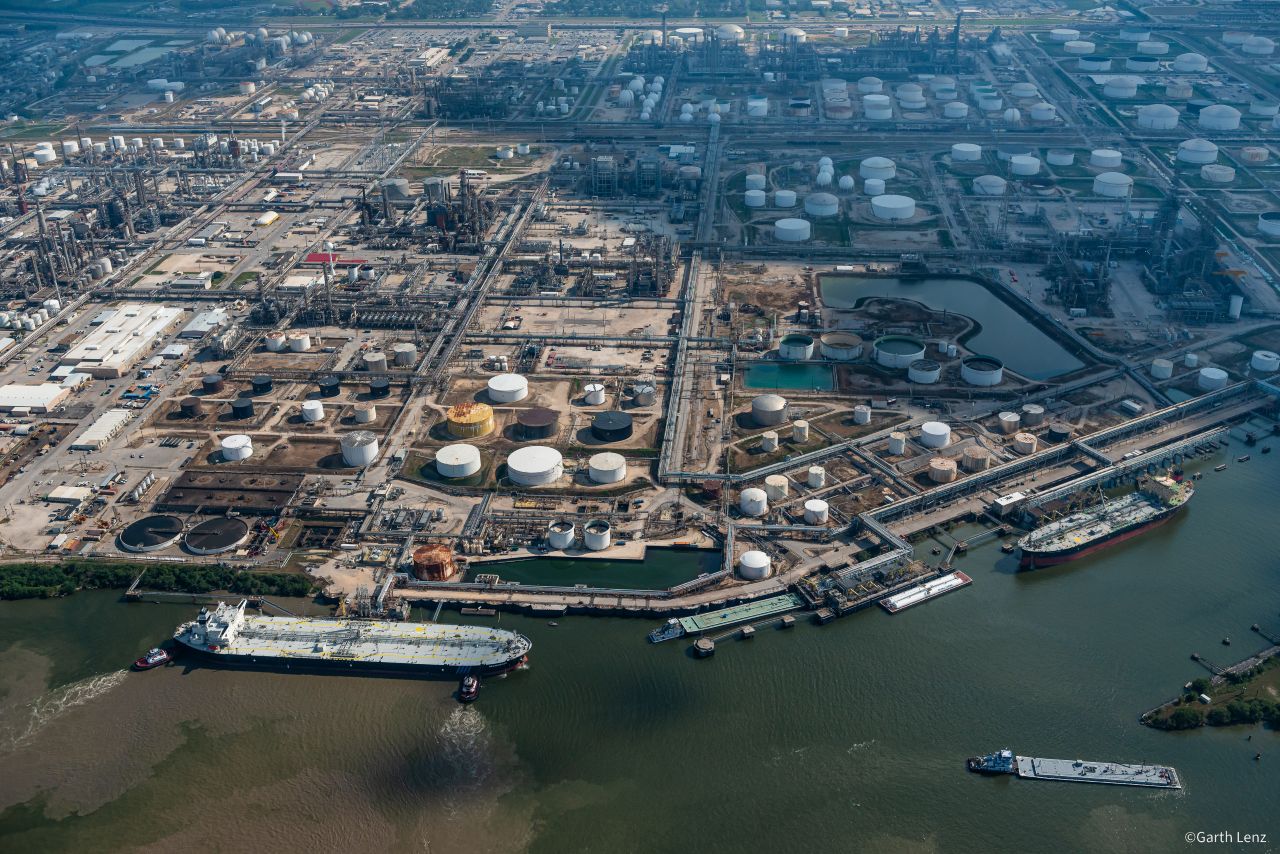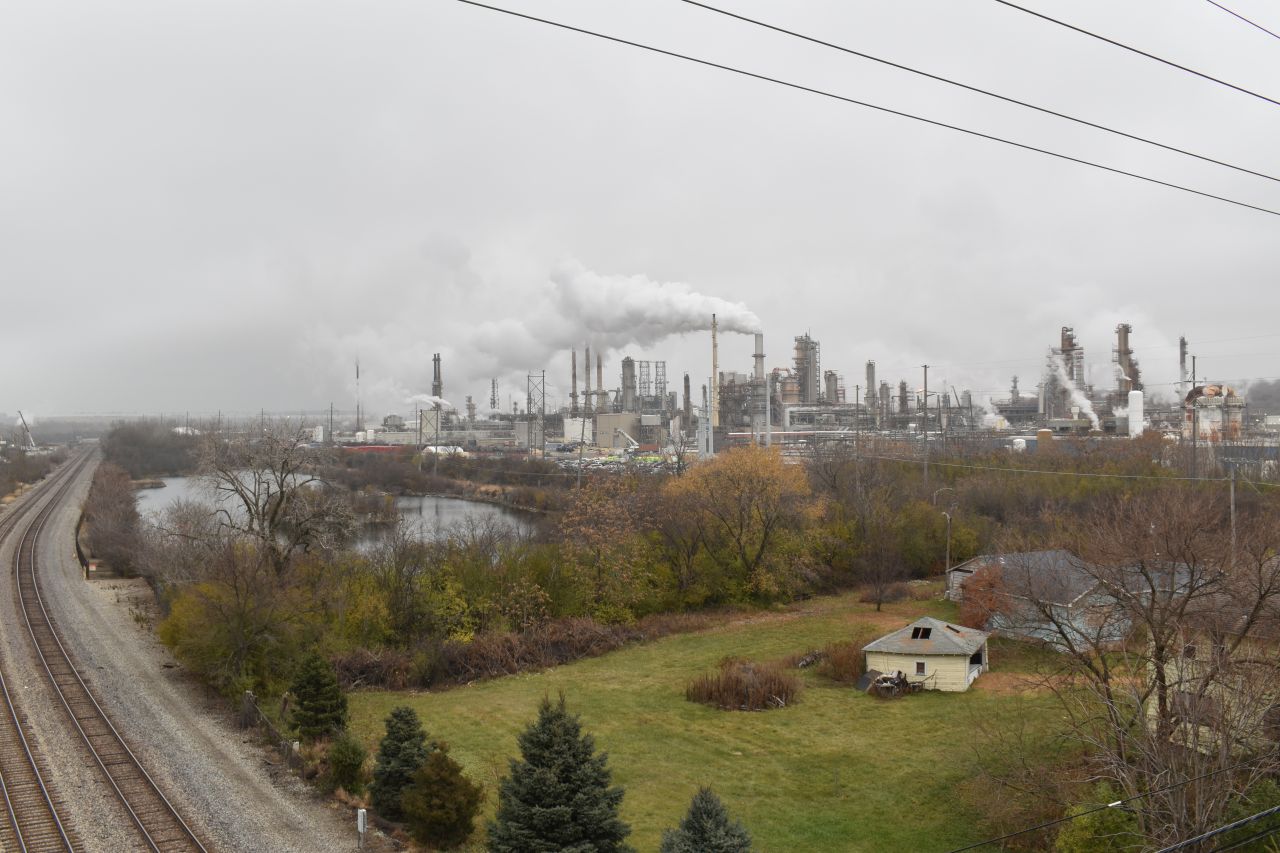Dominion LNG storage site sparks fierce opposition in rural North Carolina


For years, Jeff Hammarquist and Oci Canadas had been looking for a place to start a small farm. When they learned of a property in Person County, North Carolina, with fertile soil and plenty of space for their animals, they jumped at the opportunity.
But for the past few weeks, the peaceful atmosphere has been shattered by the sound of jackhammers, chainsaws, trucks, and explosions. Dominion Energy, a Virginia-based company that owns a natural gas utility in North Carolina, has been clearing away trees, leveling land, and blasting rock as it prepares to build a facility that will store liquified natural gas (LNG) in two massive tanks.
“We don’t live in a war zone, but there are actual explosions going on a mile away, and it feels really odd,” said Canadas, who moved with her husband to the property late last year to raise vegetables, goats, chickens, ducks, and quail.
Dominion’s LNG storage facility, Moriah Energy Center, is one of several new natural gas storage projects planned across the U.S. While many storage sites keep natural gas underground in formations called salt domes, the Moriah Energy Center would use a less common method of liquifying the gas and holding it in aboveground tanks. The gas will be used for customers "in the region" mainly on cold days when supplies are tight, Dominion says on its project website.
Dominion’s plans have sparked fierce opposition in Person County, an area of rolling fields and forests near the Virginia state line. Residents have formed two groups, Neighbors Opposed to Moriah Energy Center and Person County Community Action Network, to oppose the project.
“We chose this place to live the rest of our lives surrounded by its natural beauty,” said Bernhard Lampert, spokesman for Person County Community Action Network in a statement that accompanied a lawsuit filed over the project. “The Moriah Energy Center would destroy that beauty and create very real health threats to us. The proposed plant’s specter looms large, casting shadows over the very essence of our community life.”


Across the U.S., the number of LNG storage facilities has increased about 42 percent since 2010, from 122 to 173, according to federal data. The increase in storage is tied to a boom in domestic natural gas production and, more recently, the export market. Though the U.S. has been the world’s top gas producer since 2009, production ramped up steeply over the past five years, creating a demand to store more gas when it is not being used. More storage has also helped ensure a steady supply of gas for export from the eight LNG export terminals nationwide.
However, the Moriah Energy Center is intended to store gas not for export but for use in North Carolina. The company’s project website does not say where the gas will go, only that it will be sent out from the storage site via existing pipelines, “serving customers in the area and on the facility’s property.” Neighbors say homes near the facility do not have natural gas service; most get their energy from electric power and propane. The gas could also be loaded in trucks and driven to customers “during rare instances,” Dominion’s website states.
The facility would consist of two 25-million-gallon storage tanks and two liquefaction units each capable of producing 187,500 gallons each of LNG per day, according to the company’s revised permit application filed in April. When removing gas from storage, the facility could vaporize up to 400 million cubic feet per day when fully complete.
According to a draft air permit issued by the North Carolina Department of Environmental Quality (DEQ), the facility has the potential to emit more than 95 tons per year of carbon monoxide, a toxic gas, along with 37 tons per year of nitrogen oxides and 51 tons per year of volatile organic compounds, smog-forming pollutants tied to chronic heart and lung conditions.
Last week, the DEQ scheduled a public hearing on the draft air permit from 6 – 9 p.m. Aug. 1 at the Vance-Granville Community College’s Civic Center Auditorium in Henderson.
Dominion is moving ahead with the project even as it works to sell its North Carolina gas utility, Public Service Company of North Carolina, to Canadian energy giant Enbridge. Rusty Harris, a Dominion vice president who runs the company’s North Carolina gas business, said he and North Carolina staff would continue their roles under Enbridge, as happened when Dominion bought Public Service Company of North Carolina in 2019.
“Sometimes the logos on the trucks change or sometimes the shirts change, but the people wearing them don’t,” Harris said in a Dec. 4 public meeting.
The air permit is the last approval Dominion needs to build the facility, though the company has already stripped away trees, built roads, and leveled construction areas on about 70 acres at the center of the 486-acre property.

As the work progressed, neighbors began noticing sediment flowing into their backyard creeks that normally flow with clear water.
“It looked almost like a brown glue,” said Andrea Childers, a retired teacher, who has lived on an adjacent property for 31 years. Despite the vast amount of natural gas set to be stored next door, they rely on propane deliveries at their house and have not heard about any Dominion plans to offer natural gas service to nearby residents, she said.
North Carolina DEQ officials visited the construction site on May 30 to inspect the structures meant to control muddy runoff, according to an email obtained by Oil & Gas Watch News. The agency’s staff “observed impacts to nearby surface waters” downstream of two sediment basins – one area where sediment was escaping a natural buffer, silt fence, and temporary dam and another where sediment entered a pond near the disturbed area. They directed the company to remove sediment from one stream by hand and consider building other upgrades.


Childers and her husband, a chemist, had moved from the Raleigh suburbs to raise their two daughters in Person County, which she described as “a little slice of absolute paradise out in the country.” After learning about Dominion’s plans late last year, she was one of hundreds of residents who packed a meeting of the Person County commissioners in December. Commissioners were set to vote on a zoning change for the Moriah Energy Center property from “rural conservation” and “residential” to “general industrial.”
At the meeting, dozens held yellow signs, wore buttons saying “No MEC,” and voiced deep concerns for more than an hour and a half, with speakers drawing applause and cheers from the crowd. Despite the outcry, the five commissioners voted unanimously to approve the zoning change with no discussion or explanation of the reasons for their vote.
Eight of those residents are now taking the county to court over the vote. Represented by the Southern Coalition for Social Justice, the residents filed a lawsuit in February, arguing that the county’s planning ordinance does not mention an LNG storage and distribution facility within its industrial zone, among other issues.
Childers said the fight over the facility has changed her perception of the relationship between governments, the corporations they regulate, and the citizens they are meant to serve.
“Our representatives, our government, are not for us,” Childers said.
Lead photo: Residents speak out at a Dec. 4, 2023, Person County commissioners meeting ahead of a zoning vote for the Moriah Energy Center.














